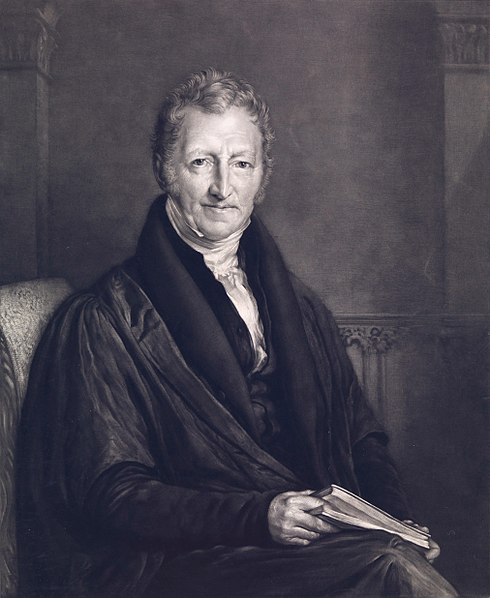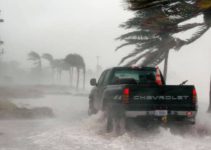Is COVID-19 a demonstration of Malthus’ prediction that there are natural checks to limit population growth? This article discusses the issue in the light of the current pandemic that affected human interactions and limited productive activities–ultimately limiting the exponential increase in the human population. The event appears to follow the Malthusian catastrophe or “natural checks” to bring population down to sustainable levels. This event was predicted in 2013 as humans encroach to wild lands. Increased contact with animals increases the chance that animal diseases will jump across species to humans and radically alter the planet.
Introduction
Much like the pandemic in 1918 due to the Spanish flu, loss of human lives continues at this time of writing due to the unabated proliferation of COVID-19, a disease caused by Severe Acute Respiratory Syndrome Coronavirus 2 (SARS-CoV-2)(World Health Organization, 2020) that originated from Wuhan, China.
Governments instituted steps to control the spread of the virus through preventive means as there is yet no vaccine to control the spread of the disease, hopefully. The current effort is aimed towards “flattening the curve,” meaning, halt further infection of the population by putting places where the disease occurred into quarantine. Terms like isolation, use of disinfectants, community quarantine, enhanced community quarantine, general community quarantine, lockdown, and hard lockdown have become commonplace in the media.
Technology has always been a refuge to solve problems like the disease caused by viruses. Vaccines activate and strengthen people’s immunity, thus counter the lethal effects of contracting the virus. However, despite the advances made in this area, experts predict it would take 12 to 18 months to develop vaccines for COVID-19.

Further, there is uncertainty on whether a particular vaccine will be useful in the long-term because there are anecdotal reports of reinfection. Also, the safety and efficacy of the vaccine need confirmation. Ethical considerations and licensing are concerns that take time. Each country has its regulatory processes to ensure the safety and effectiveness of the vaccine. Vaccine development also depends on pharmaceutical companies’ willingness to invest in their development. Some companies are hesitant because of the possibility that their products may no longer be in demand once the epidemic reaches manageable levels.
Uncertainty Surrounding COVID-19
Scientists are dealing with a new coronavirus, which is not fully understood. At the initial stages of countermeasures, many approaches would be a hit-and-miss approach. Health care is mainly supportive, not curative, in nature as the body fights the virus, sometimes in vain. Infection is fast, while recovery is slow as it takes days to recover from the disease. Symptoms appear around five to six days after exposure, although it could be evident from 1 to 14 days.
The reality is: there will be increased mortality at a significant scale as health systems get overwhelmed by a highly contagious disease such as COVID-19.
Pandemic in the Past
Historically, about 1/3 of the population in 1918 got infected with the Spanish flu virus, which led to an estimated 17 to 50 million deaths worldwide. It will be a matter of time before a third of the people get infected before an effective vaccine comes at the rescue. That is if history repeats itself.
As a result of the pandemic, people all over the world lost their freedom to socialize or interact with other people by adhering to such practices as physical distancing, avoiding large crowds, limiting shopping to necessities and ultimately staying at home to lessen the probability of getting infected. In the US, some groups go to the extent of conducting demonstrations against quarantine in exchange for their freedom. Perhaps they believe that the benefit exceeds the cost associated with contracting the disease.
The Malthusian Viewpoint on Population Growth
If we adopt the Malthusian viewpoint, the loss or reduced interaction between people due to disease means less chance to reproduce or sustain the increase in the pre-COVID-19 population. The disease serves as a “Positive Check” or “Natural Check” that would lead to the Malthusian catastrophe. The catastrophe would bring the population down to levels that the world can sustain.

Imagine what a catastrophe it would be if we multiply 7 billion people to a third who will be infected. That number will be a staggering 2.31 billion people if we produce the vaccine at a rate it was done in 1918. But we have technology that helps speed up the development of vaccines through online collaboration among scientists. We expect lower mortalities.
Despite this technological solution espoused by the Cornucopians, however, it will be tough to control the disease before a significant reduction in the human population has occurred. Why so? The reason is that while the vaccine is underway, the virus mutates as it infects people. That brings us to the question of whether the vaccine will be effective for all strains of the disease. Indian scientists found out that the US and Italy strain of COVID-19 is more virulent than that affecting India.
The Anthropocene Has Come
Chilling as it may seem, Vince prediction in 2013 of the so-called Age of Man or Anthropocene has come. Anthropocene is a time where humans encroach on wildlands for food as food production, even with technology, could not provide enough for a fast-growing population. The Wuhan market of wild animals and seafood as a source of food attests to this fact.
According to Vince, increased contact or interaction with wild animals increases the chance that diseases that infect animals will jump across species to humans. The virus will quickly spread between individuals and populations, especially in densely populated areas. As people travel across countries, virtually all places will be affected. It did happen today.
Pandemics, according to her, can kill a significant portion of the human population. A pandemic can cause the death of 90% of the population in some locations. It will have acute and lasting effects on society.
Long-term Effects of COVID-19
A major population change will occur as well as significant changes in social and economic life. A new way of life will emerge characterized by low levels of social interaction.
The worldwide trend of infection and deaths still rises sharply. More than 3 million people have already contracted the disease at this time. More than 200,000 have died. It will be more disturbing to note that in some countries, almost 80% of the deaths are unaccounted for as people die in their homes unrecorded. Such is the case in India.
Undoubtedly, the COVID-19 pandemic will have long-term effects on the population in general. Everyone goes back to meeting their basic needs as food production and demand lessens due to the uncertainty and threat posed by asymptomatic carriers of the disease.
Home-based food production will be the trend in the coming days that will impact on the way food is being produced and distributed worldwide. Everyone’s efforts will center on self-preservation. Cities will decongest as a necessary strategy to control the pandemic.
Brace yourself for the new normal. It appears that the Malthusian viewpoint on population checks to reduce or bring back the population to sustainable levels may be right after all.
© 2020 April 29 P. A. Regoniel



